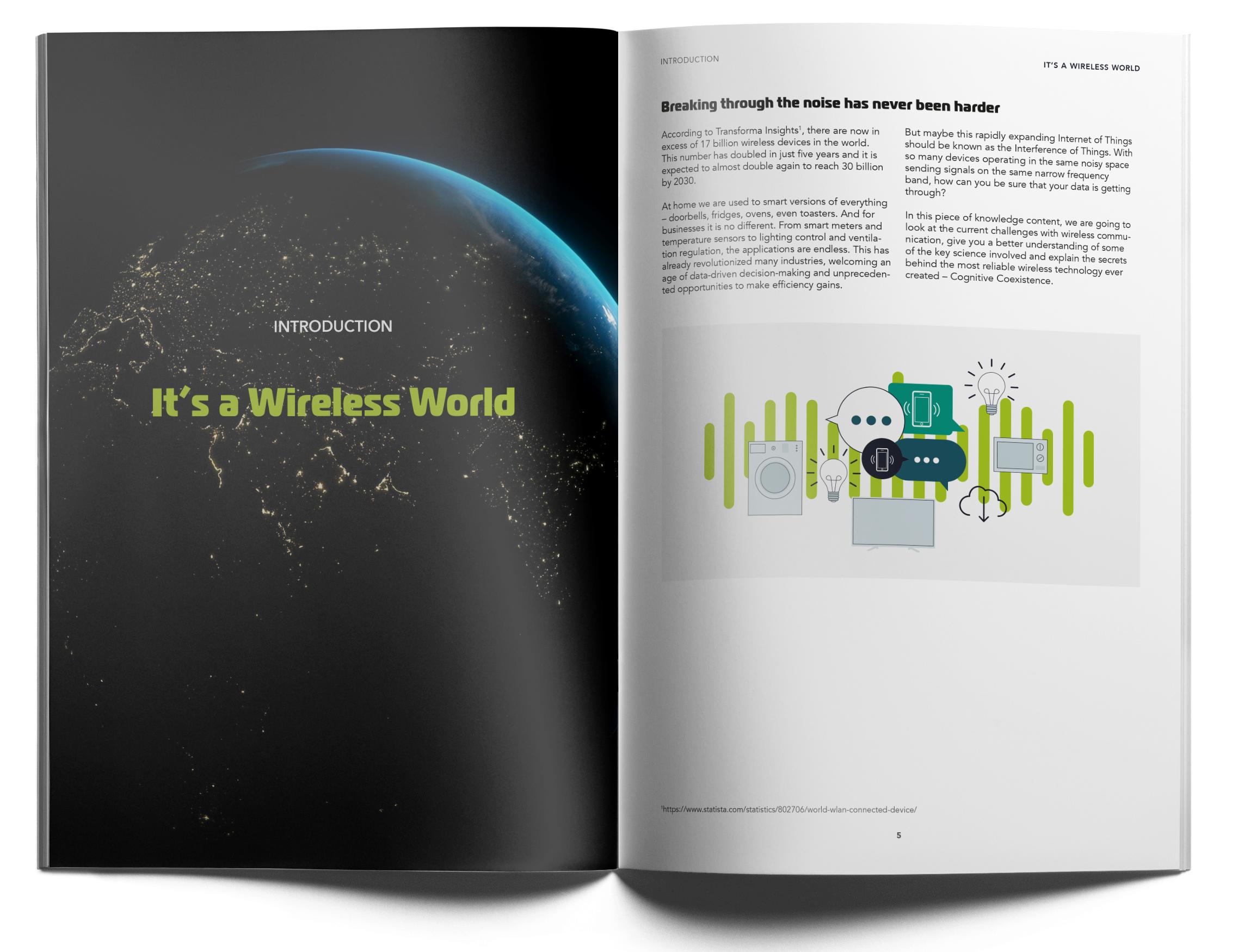IoT and the “Interference of Things”
The Internet of Things has become one of the most hyped and probably most important expressions across today’s business and technology transformations. There are predictions about several billions devices being connected wirelessly in the future. But simultaneously there’s a topic quietly becoming a critical challenge for old and new business models – The Interference of Things.
The most popular and most used frequency is the 2.4 GHz-Band, which is accessible globally without buying expensive licenses. Actually it is already highly congested because it is used by so many users such as Bluetooth devices and Wi-Fi routers – it is also affected by electrical appliances such as microwave ovens. That means for any device which wants to operate on this frequency, it faces interference challenges resulting in transmission disturbances, which will be rather more than less in the future. If your connectivity solution cannot cope with these ever changing conditions, you might end up with an installed base of products that will have problems or even stop working in a few years from now.
With billions of devices being wirelessly connected, the frequency spectrum is increasingly becoming more congested and soon, it will become one of our most scarce natural finite resources.
A patented core technology
The Cognitive Coexistence technology, patented by LumenRadio’s, is enabling (as its name implies) a coexistence with other devices operating on the 2.4 GHz band. The Cognitive Coexistence avoids getting disturbed as well as causing disturbances to other systems sharing the spectrum. The process contains three steps:
- Detecting disturbances in form of RF energy or bit errors
- Identifying the character of the disturbance sources by comparing the detected data with known patterns
- Adapting by hopping to interference-free channels. By predicting the behavior of identified systems in the same environment through a statistical evaluation of the given information, it’s possible to avoid the usage of the same channels
This requires all network nodes being perfectly synchronized, so they can change to a dictated channel for simultaneous transmission across the network. Mira enables an accurate network synchrony of 5-50 microseconds, depending on network size. This is possible through the so-called LR-TSCH, a component integrated into MiraOS, which uses a perfect timing of receive and transmission behavior, between the nodes.
Adapting to any environment
Being future-proof by adapting to any radio environment is the major benefit of LumenRadio’s Mira technology. The future will bring more connected devices, the Cognitive Coexistence will handle increasing interference and ensure a reliable connection. With LumenRadio’s system it is possible to achieve Packet Delivery Rates of >99,5% in heavily congested frequency environments, leading to a more efficient usage of this scarce resource and several additional benefits for our customers, such as:
Low power consumption
Ultra-low power consumption is one of our trademarks, not wasting time and energy by retransmitting lost packets, using the radio too early and/or keeping it on for too long, becomes a key factor in efficient battery management. Being able to duty cycle the radio extremely hard, is what enables us to build meshing networks of battery-operated devices with 10+ years battery-lifetime.
If a device has to resend the same packet again (and again, and again…), it wastes time, energy, and bandwidth. Higher package delivery rates enable an improved efficiency in throughput on a restricted bandwidth. So you can design your network relying on a stable throughput.
We don’t know how many more wireless devices will be around us in the coming years, but it’s for sure that it will be more than today. With our embedded software MiraOS integrated, customers’ products can achieve long lifecycles and less uncertainties according to our vision:
Wireless Without Worries!





